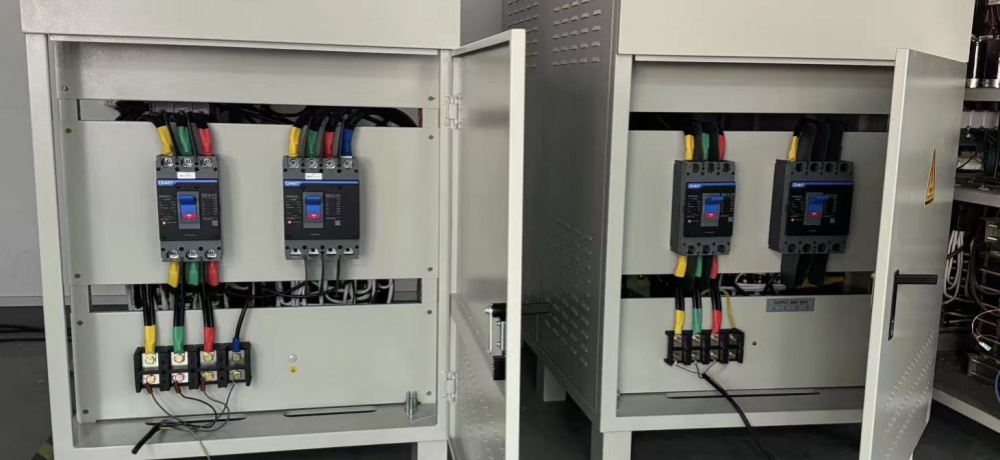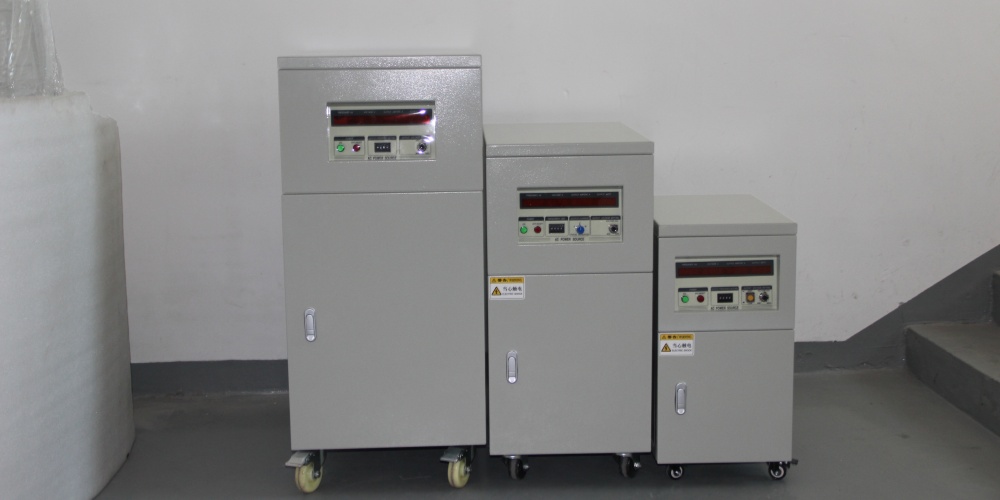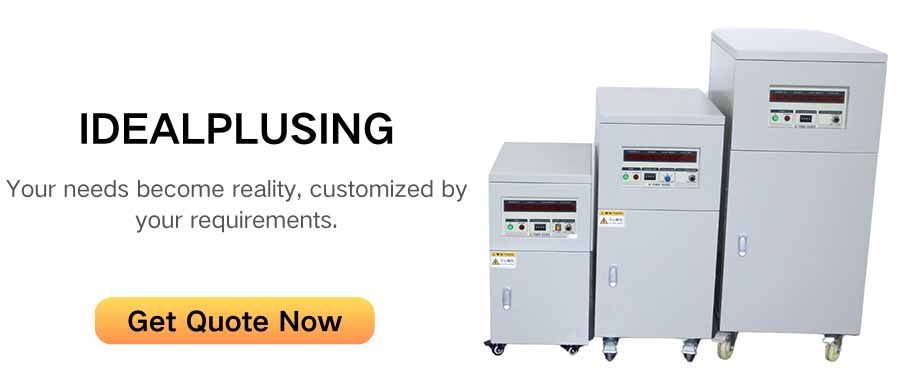A variable-frequency power supply (VFD) converts mains power (typically 50Hz/60Hz) into AC power with adjustable frequency, adjustable voltage, and a clean, stable waveform (typically a sinusoidal wave). It is primarily used in applications requiring precise control of AC frequency, voltage, and waveform, particularly those with extremely high power quality requirements or those requiring simulation of diverse power grid environments. Its main application areas are as follows:
Product R&D, Testing, and Certification Laboratories
Electrical Equipment Performance Testing: Testing the performance, efficiency, stability, temperature rise, and withstand capability of household appliances (refrigerators, air conditioners, washing machines), power tools, lighting equipment (especially LED drivers), switching power supplies, transformers, relays, solenoid valves, motor controllers, and more at different frequencies and voltages.
Electromagnetic Compatibility Testing: Providing a clean power input as a reference source during EMC testing for conducted interference, harmonic currents, voltage fluctuations, and flicker, eliminating the impact of grid interference on the performance of the device under test and ensuring the accuracy of test results.
Safety Certification Testing: Simulating various abnormal grid conditions (such as voltage fluctuations, frequency deviations, and waveform distortion) to conduct safety compliance testing (e.g., IEC/UL standards). Electronic Component Testing: Testing the characteristics of capacitors, inductors, magnetic components, and other components at specific frequencies.
Aerospace Equipment Testing: Testing the performance and compatibility of airborne equipment at the standard aviation frequency of 400Hz.
Manufacturing and Quality Inspection Lines
In-Line Testing/Aging Testing: Using a variable-frequency power supply to power products on the assembly line or before shipment, functional testing, aging testing, and quality inspection are performed at a set frequency and voltage (which may include power-up, power-down, voltage fluctuations, and frequency change sequences).
Power Module/Inverter Testing: Acting as a load or source, testing the input and output characteristics, conversion efficiency, and dynamic response of AC-DC and DC-AC power modules, photovoltaic inverters, and UPS.
Motor and Drive System Field
Motor Test Benches: Providing clean power with independently adjustable frequency and voltage to the motor under test, accurately testing the motor's performance parameters (efficiency, power factor, temperature rise, starting characteristics, and load characteristics) at different speeds and torques. This is a very important application scenario for variable-frequency power supplies, especially in motor R&D and quality inspection centers.
Inverter/Servo Drive Input Testing: Tests the response and performance of inverters or servo drives when the input power frequency and voltage vary.
Generator Simulation Testing: Simulates the frequency and voltage conversion characteristics of a generator output to test the associated controller or load equipment.
Aviation and Military Electronics
Ground Maintenance and Testing of Airborne Equipment: Aircraft electronic equipment typically uses 400Hz AC power. Variable frequency power supplies provide a stable 400Hz power supply for ground maintenance, testing, and startup of aircraft equipment.
Military Equipment Testing: Provides power at a specific frequency and voltage for testing equipment that meets military standards (such as MIL-STD-704).
Marine and Offshore Equipment
Marine Equipment Testing and Maintenance:Shipboard power systems may have varying frequencies (e.g., 60Hz). Variable frequency power supplies can be used to test the operation of marine equipment under shore power or different shipboard power conditions. Renewable Energy:
Microgrid/Energy Storage System Testing:Simulates various grid operating conditions (frequency fluctuations, voltage variations) to test the grid-connected/off-grid switching and frequency and voltage support capabilities of energy storage converters and microgrid controllers.
Special Applications
Equipment Requiring High-Precision and Stable Power Supply: Provides clean power to precision instruments, medical equipment, laboratory equipment, and other devices, free from grid fluctuations and harmonic interference (although UPS or linear power supplies are sometimes used, variable-frequency power supplies are more suitable when frequency and voltage regulation are required).
Simulating the Power Grid of a Specific Country: Some countries or regions have grid frequencies of 50Hz or 60Hz, and voltages vary. Variable-frequency power supplies can be used to test the compatibility of products exported to these regions.
Core Application Values of Variable-Frequency Power Supplies
Adjustable Frequency: Meets the needs of specialized equipment (such as 400Hz aviation equipment and motor testing) or simulates different grid frequencies.
Adjustable Voltage:Tests equipment performance under varying input voltages.
Pure and Stable Waveform: Provides low-distortion, low-harmonic, and highly anti-interference power supply, suitable for use as a test reference source or to power sensitive equipment. Simulating Grid
Abnormalities: Programmable output voltage fluctuations, frequency offsets, waveform distortion, and more are used for reliability and safety testing.
Independent Control: Frequency and voltage can usually be adjusted independently, providing greater testing flexibility.
Differences from VFDs
It is important to note that variable-frequency power supplies differ from common VFDs:
Variable-frequency power supplies: Their purpose is to provide a clean, stable, frequency- and voltage-adjustable AC output power source, primarily used for testing and power supply. The output waveform is high-quality.
VFDs:Their purpose is to drive motors with variable speed. Through rectification and inversion, they directly output variable-frequency and voltage AC power to the motor. Their output waveform is typically a PWM wave (containing many high-order harmonics). The primary focus is on motor control performance rather than absolute waveform purity.
In short, when your application's core requirement is to precisely control the power supply's characteristics (frequency, voltage, waveform) for testing or power supply, you need a variable-frequency power supply; when your application's core requirement is to control motor speed, you need a VFD.
IDEALPLUISNG Power Expert:
We focus on the research and development, sales and services in the fields of DC-DC power modules, AC-DC rectifier modules, DC-AC inverters, AC power supplies, DC power supplies, LED power supplies, chargers, rectifier systems, etc., providing personalized, efficient, reliable and cost-effective power solutions for all walks of life.
Thank you for considering our services.









